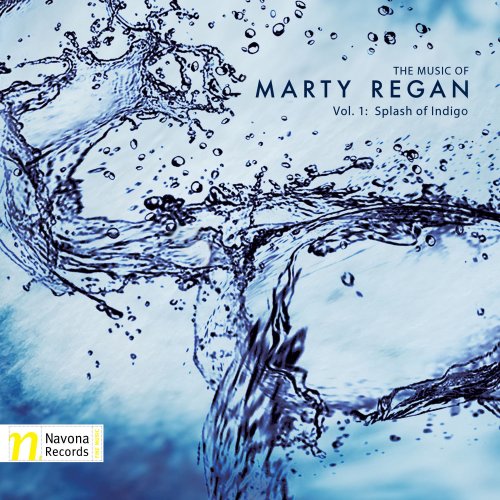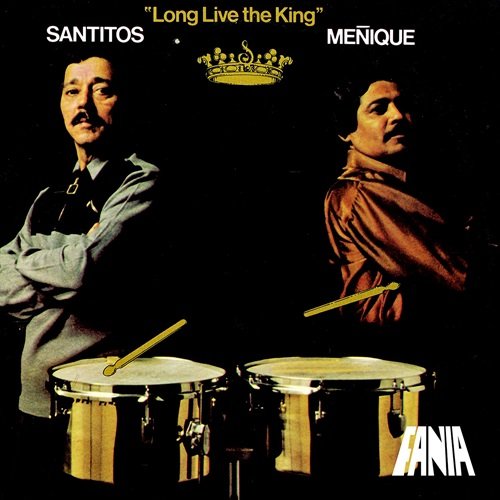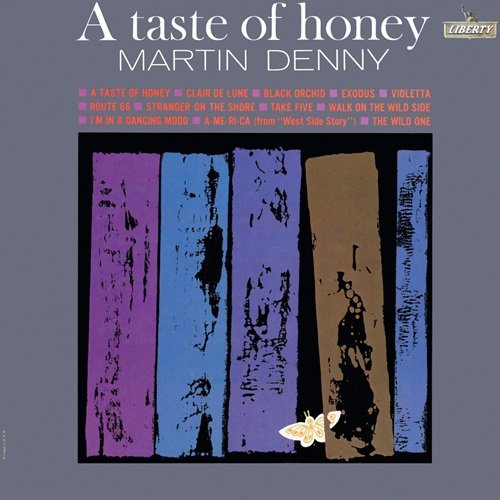VA - The Music of Marty Regan, Vol. 1: Splash of Indigo (2016) [Hi-Res]

Artist: Various Artists
Title: The Music of Marty Regan, Vol. 1: Splash of Indigo
Year Of Release: 2016
Label: Navona Records
Genre: Classical
Quality: FLAC (tracks) [44.1kHz/24bit]
Total Time: 1:10:04
Total Size: 604 / 273 MB
WebSite: Album Preview
Tracklist:Title: The Music of Marty Regan, Vol. 1: Splash of Indigo
Year Of Release: 2016
Label: Navona Records
Genre: Classical
Quality: FLAC (tracks) [44.1kHz/24bit]
Total Time: 1:10:04
Total Size: 604 / 273 MB
WebSite: Album Preview
01 Brendan Kinsella - Riding Through Misty Clouds
02 Moravian Philharmonic Orchestra Olomouc - Overdrive
2 Movements for Violin & Piano
03 Chloé Trevor - I. Half Note = 52-60 (Poco rubato)
04 Chloé Trevor - II. Quarter Note = 112 (Molto perpetuo)
05 Trio Xia - Runaway Train
3 Poems by Tanikawa Shuntaro
06 Julia Fox - No. 1, Kiss
07 Julia Fox - 3 Poems by Tanikawa Shuntaro: No. 2. Koro, koro
08 Julia Fox - No. 3, Haru
09 Apollo Chamber Players - Splash of Indigo
American composer Marty Regan specializes in composing music for traditional Japanese instruments, a fascination he has developed since 2000. Regan describes his Japanese-style compositions as, “hybrid musical soundscapes that reflect the age in which we live, an era based not necessarily on globalization, but of partnership based on global cultural interaction.” In contrast, SPLASH OF INDIGO features a complementary side of Regan’s output, containing only works for Western orchestral instruments and voice.
Despite the album’s instrumentation, Regan’s connection to Japan remains strong in SPLASH OF INDIGO. For example, Regan borrows from Japanese culture in a different way via the text of Three Poems by Tanikawa Shuntarō, while Splash of Indigo is based on idiomatic gestures and pitch collections found in Japanese folk music. Likewise, Regan’s solo piano composition Riding through Misty Clouds reconvenes with the naturalistic symbolic space he explores so thoroughly in his works for Japanese instruments, such as those featured on his earlier Navona releases FOREST WHISPERS (2010) and MAGIC MIRROR (2012).
As the latest addition to Regan’s growing catalog on the Navona label, SPLASH OF INDIGO offers a unique and valuable perspective on the full character of Regan’s music. Indeed, Regan’s works for traditional Japanese instruments tend to be understated and convey a subdued energy level. SPLASH OF INDIGO shows a different side of Regan’s aesthetic, like the explosive and post-minimalist personality of his rhythmically-driven orchestral work Overdrive. Even the more lyrical works on SPLASH OF INDIGO, such as Two Movements for Violin and Piano, are fundamentally different from Regan’s other music. Here, lyricism functions as a distinct space in the piece, and – particularly in the first movement of Two Movements for Violin and Piano – is placed against highly energized, rhythmic material to define the work’s structure.
Seen in the context of Regan’s career, the works on SPLASH OF INDIGO are most impressive in the range of musical forms they display. Perhaps drawing from Japanese musical aesthetics, constructing clearly defined musical forms are less of a concern in Regan’s compositions for traditional Japanese instruments. However, SPLASH OF INDIGO proves Regan is more than capable of inventing and developing charming and complex networks of musical ideas. In its varied collection of chamber and large ensemble works, SPLASH OF INDIGO shows Marty Regan is a composer of considerable breadth and skill beyond his dedicated efforts to build a bridge between American and Japanese musical culture.
Despite the album’s instrumentation, Regan’s connection to Japan remains strong in SPLASH OF INDIGO. For example, Regan borrows from Japanese culture in a different way via the text of Three Poems by Tanikawa Shuntarō, while Splash of Indigo is based on idiomatic gestures and pitch collections found in Japanese folk music. Likewise, Regan’s solo piano composition Riding through Misty Clouds reconvenes with the naturalistic symbolic space he explores so thoroughly in his works for Japanese instruments, such as those featured on his earlier Navona releases FOREST WHISPERS (2010) and MAGIC MIRROR (2012).
As the latest addition to Regan’s growing catalog on the Navona label, SPLASH OF INDIGO offers a unique and valuable perspective on the full character of Regan’s music. Indeed, Regan’s works for traditional Japanese instruments tend to be understated and convey a subdued energy level. SPLASH OF INDIGO shows a different side of Regan’s aesthetic, like the explosive and post-minimalist personality of his rhythmically-driven orchestral work Overdrive. Even the more lyrical works on SPLASH OF INDIGO, such as Two Movements for Violin and Piano, are fundamentally different from Regan’s other music. Here, lyricism functions as a distinct space in the piece, and – particularly in the first movement of Two Movements for Violin and Piano – is placed against highly energized, rhythmic material to define the work’s structure.
Seen in the context of Regan’s career, the works on SPLASH OF INDIGO are most impressive in the range of musical forms they display. Perhaps drawing from Japanese musical aesthetics, constructing clearly defined musical forms are less of a concern in Regan’s compositions for traditional Japanese instruments. However, SPLASH OF INDIGO proves Regan is more than capable of inventing and developing charming and complex networks of musical ideas. In its varied collection of chamber and large ensemble works, SPLASH OF INDIGO shows Marty Regan is a composer of considerable breadth and skill beyond his dedicated efforts to build a bridge between American and Japanese musical culture.
![Eshon Burgundy - Safe Place (Bossa Nova Jazz) (2025) [Hi-Res] Eshon Burgundy - Safe Place (Bossa Nova Jazz) (2025) [Hi-Res]](https://www.dibpic.com/uploads/posts/2025-12/1766079194_cover.jpg)


![Xavi Torres - Amsterdam Magic (2025) [Hi-Res] Xavi Torres - Amsterdam Magic (2025) [Hi-Res]](https://www.dibpic.com/uploads/posts/2025-12/1766061682_cover.jpg)

![Joshua White - Flora and Fauna: 9 Preludes for Solo Piano (2025) [Hi-Res] Joshua White - Flora and Fauna: 9 Preludes for Solo Piano (2025) [Hi-Res]](https://img.israbox.com/img/2025-12/19/1w90raxdb6ohgwszk3wk3pfts.jpg)


